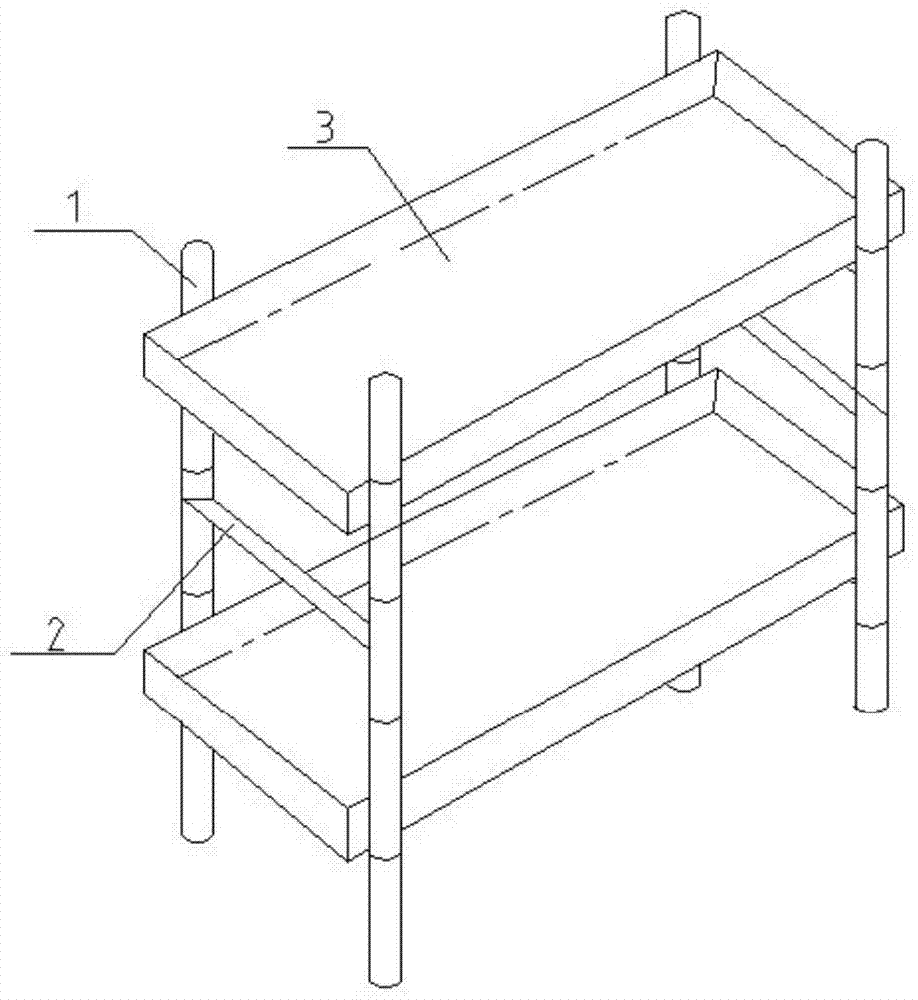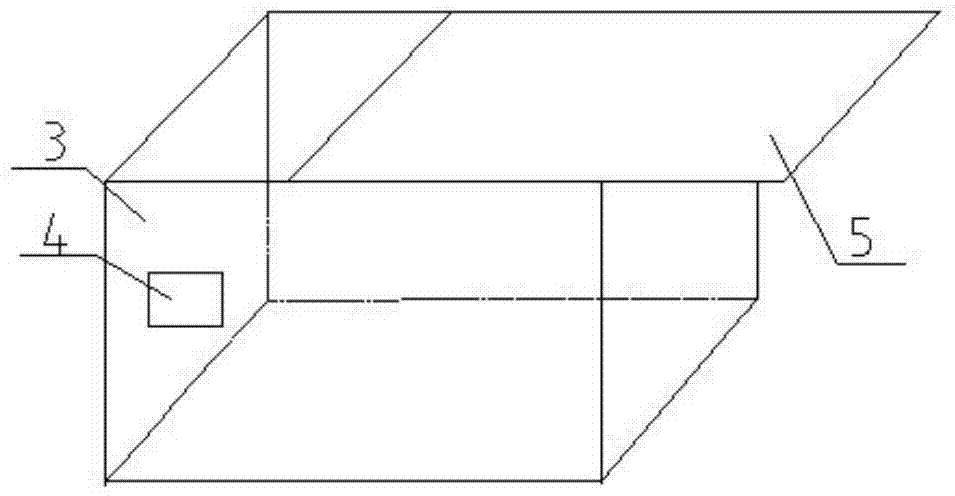Silkworm cultivation method
A breeding method and silkworm technology, applied in the field of silkworm breeding, can solve the problems of unsatisfactory quality and yield of silkworm cocoons, unstable effect of artificial feed, poor growth and development of silkworms, etc., so as to avoid poor growth and development and avoid harvesting. The ant time is too long and the effect of saving horizontal space
- Summary
- Abstract
- Description
- Claims
- Application Information
AI Technical Summary
Problems solved by technology
Method used
Image
Examples
Embodiment 1
[0036] A method for cultivating silkworms, comprising:
[0037] Greening management: the day before the silkworm eggs are put into the cultivation platform, disinfect the cultivation platform with a disinfectant solution containing 3% chlorine mass fraction, sprinkle a layer of lime powder with a thickness of 0.2cm on the surface of the sterilized cultivation platform, and remove the silkworm eggs. Eggs are put into the cultivation platform to carry out shading and accelerating greening for 4 days, and carry out photosensitization at 5-7 o'clock in the morning of the fifth day to obtain ant silkworm; When the light is weak, the damage to the silkworms is low, so that the silkworms can adapt to the external environment faster.
[0038] Breeding management: move the silkworms into the silkworm room, control the temperature at 25°C, feed the silkworms until the fourth instar silkworms, and then feed them with mulberry leaves until the silkworms form cocoons;
[0039] Wherein, th...
Embodiment 2
[0053] A method for cultivating silkworms, comprising:
[0054] Greening management: the day before the silkworm eggs are put into the cultivation platform, disinfect the cultivation platform with a disinfectant solution containing 3% chlorine mass fraction, sprinkle a layer of lime powder with a thickness of 0.5 cm on the surface of the sterilized cultivation platform, and remove the silkworm eggs. Eggs are put into the cultivation platform to carry out shading and accelerating greening for 4 days, and carry out photosensitization at 5-7 o'clock in the morning of the fifth day to obtain ant silkworm; When the light is weak, the damage to the silkworms is low, so that the silkworms can adapt to the external environment faster.
[0055] Breeding management: move the silkworms into the silkworm room, control the temperature at 28°C, put feed on the silkworms until the fourth instar silkworms, and then feed them with mulberry leaves instead until the silkworms form cocoons;
[0...
Embodiment 3
[0070] A method for cultivating silkworms, comprising:
[0071] Greening management: the day before silkworm eggs are put into the cultivation platform, disinfect the cultivation platform with a disinfectant solution containing 3% chlorine mass fraction, sprinkle a layer of lime powder with a thickness of 0.3cm on the surface of the sterilized cultivation platform, and remove the silkworm eggs. Eggs are put into the cultivation platform to carry out shading and accelerating greening for 4 days, and carry out photosensitization at 5-7 o'clock in the morning of the fifth day to obtain ant silkworm; When the light is weak, the damage to the silkworms is low, so that the silkworms can adapt to the external environment faster.
[0072] Breeding management: move the silkworms into the silkworm room, control the temperature at 26°C, feed the silkworms until the fourth instar silkworms, and then feed them with mulberry leaves until the silkworms form cocoons;
[0073] Wherein, the fe...
PUM
 Login to View More
Login to View More Abstract
Description
Claims
Application Information
 Login to View More
Login to View More - R&D
- Intellectual Property
- Life Sciences
- Materials
- Tech Scout
- Unparalleled Data Quality
- Higher Quality Content
- 60% Fewer Hallucinations
Browse by: Latest US Patents, China's latest patents, Technical Efficacy Thesaurus, Application Domain, Technology Topic, Popular Technical Reports.
© 2025 PatSnap. All rights reserved.Legal|Privacy policy|Modern Slavery Act Transparency Statement|Sitemap|About US| Contact US: help@patsnap.com


